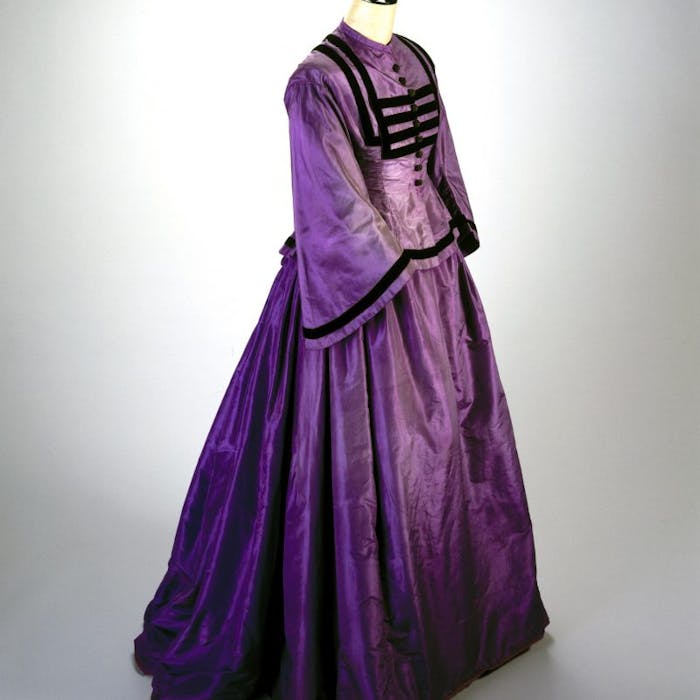
Perkin's purple patch - the first mass-manufactured synthetic dye
Young London chemist William Perkin brought a new colour to the world in 1856 with the invention of a vibrant artificial purple. He was actually trying to create a completely different product ...
He was looking for a way to create a synthetic quinine (an expensive natural substance much in demand for the treatment of malaria) when instead he discovered synthetic colour. In 1856, he was using alcohol to clean up some chemical residue when he suddenly saw an intense purple colour appear. At that time, purple dye was one of the most expensive to manufacture as it had to be extracted from molluscs.
Perkin worked out how to produce his new colour – almost the first ever synthetic dye - and patented it when he was still only 18. He had the good sense to manufacture it himself (persuading his father to put up the capital) and became rich as a result.
Not only were synthetic dyes cheaper, but they were more vivid and fade-resistant than natural dyes, so their popularity continued even after the novelty of bright colours had worn off.
Perkin continued active research in organic chemistry for the rest of his life, discovering and marketing other synthetic dyes, including Britannia Violet and Perkin's Green.
Further reading
Links to external websites are not maintained by Bite Sized Britain. They are provided to give users access to additional information. Bite Sized Britain is not responsible for the content of these external websites.
